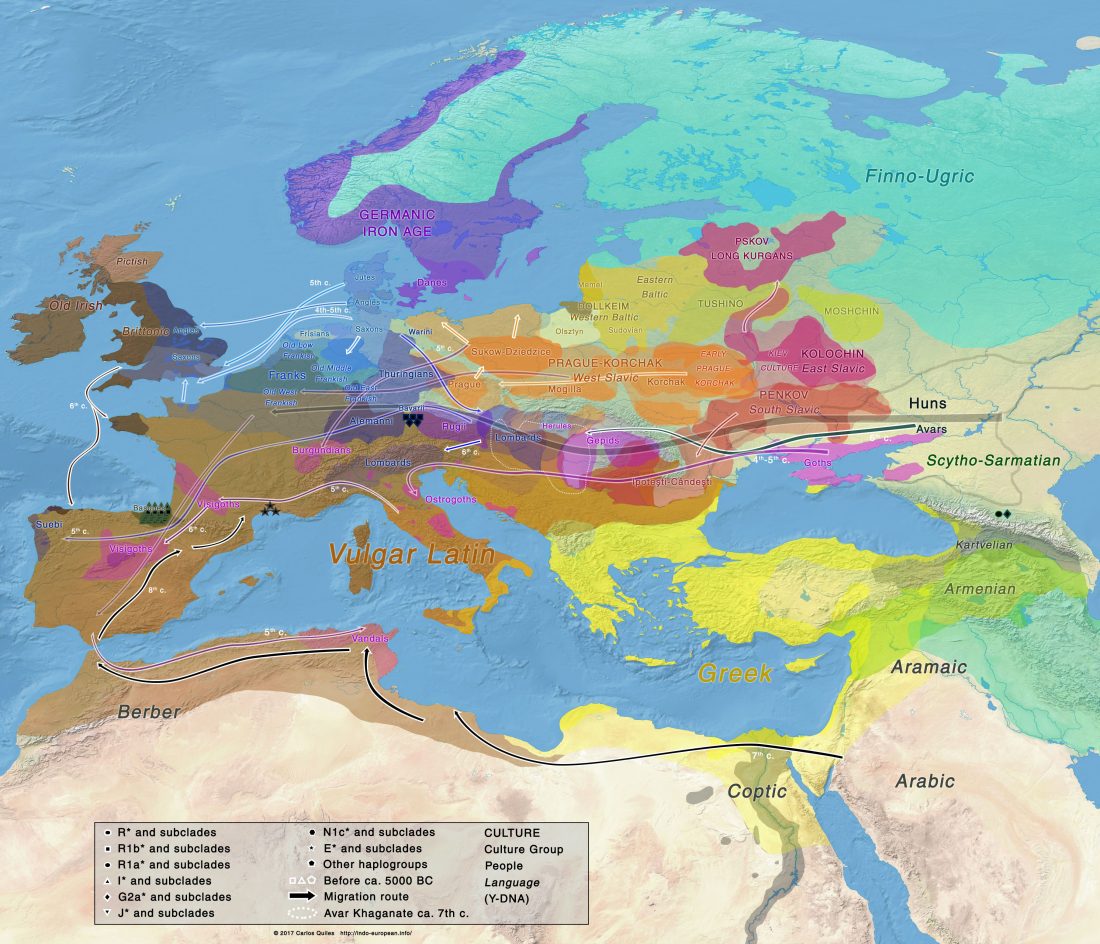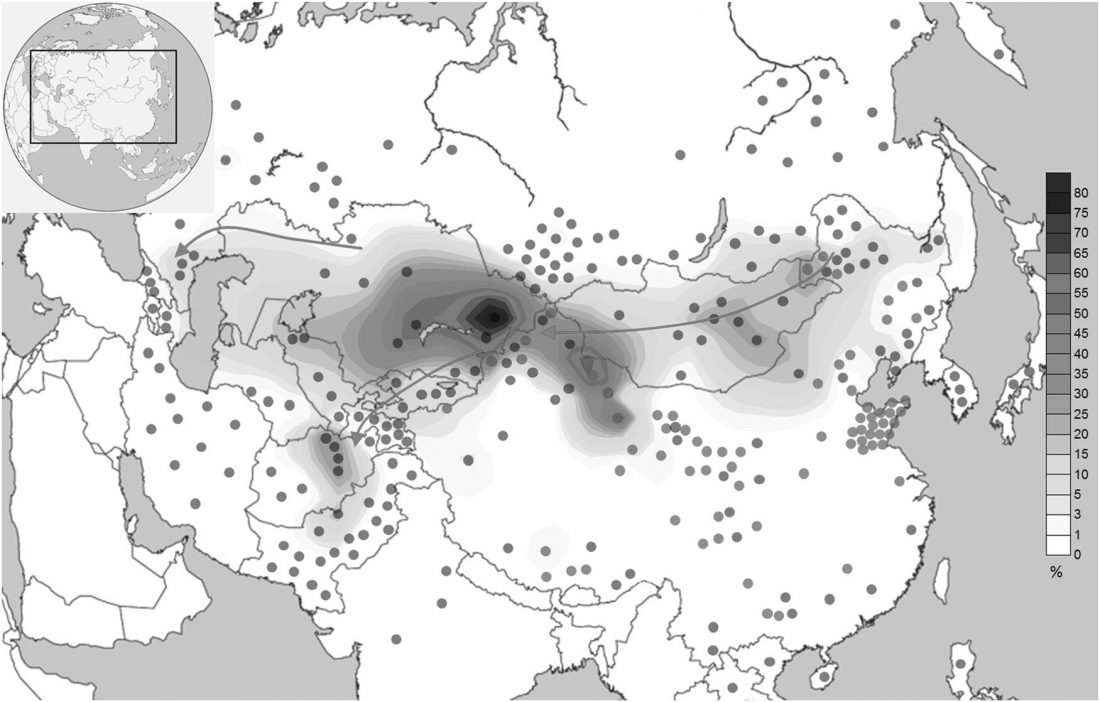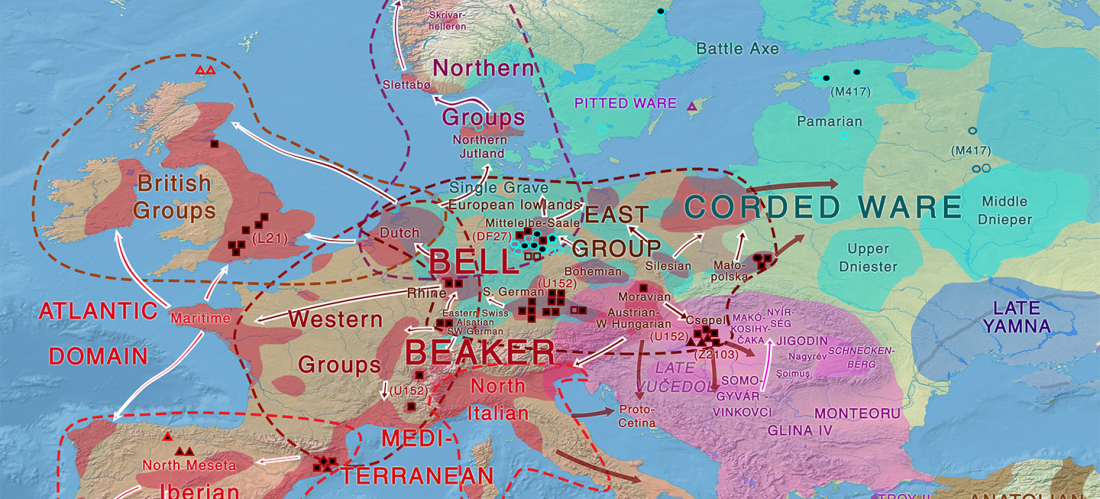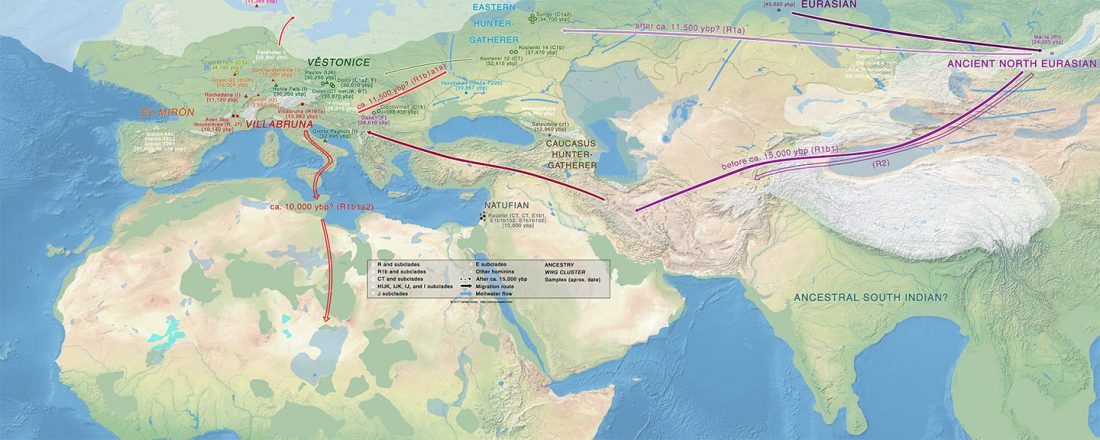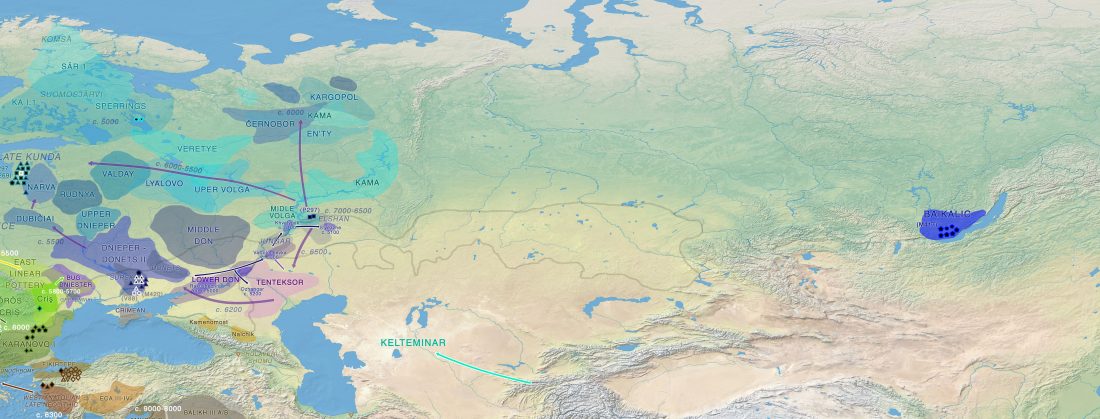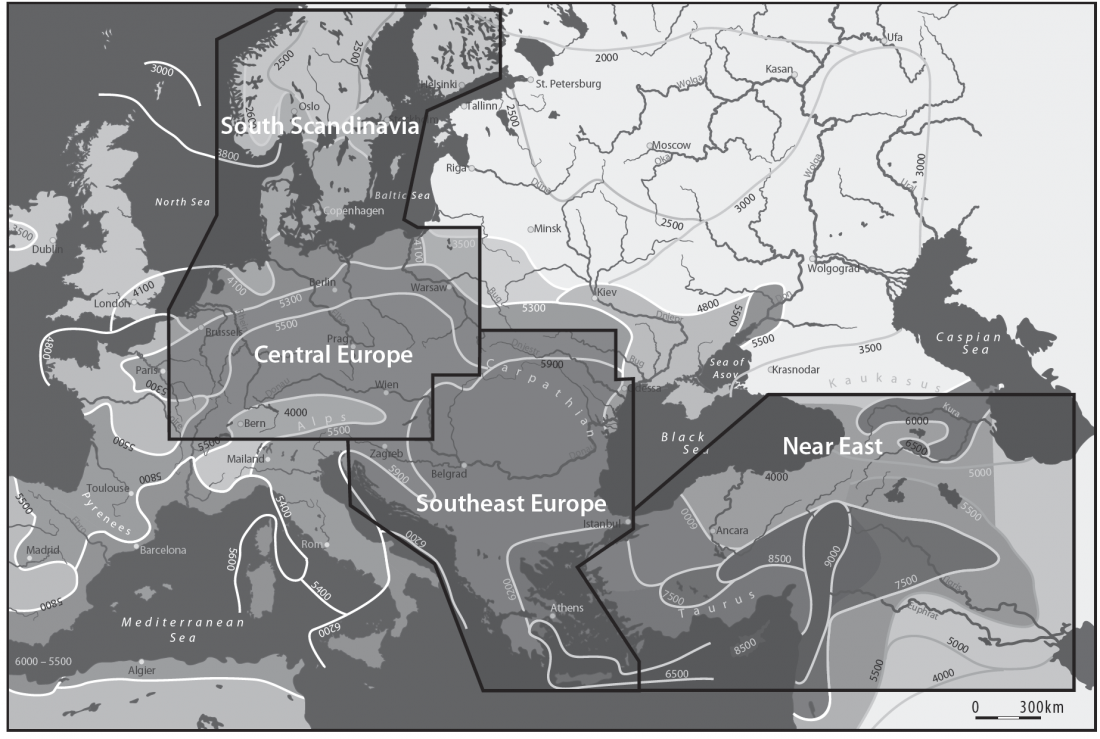Germanic tribes during the Barbarian migrations show mainly R1b, also I lineages
New preprint at BioRxiv, Understanding 6th-Century Barbarian Social Organization and Migration through Paleogenomics, by Amorim, Vai, Posth, et al. (2018)
Abstract (emphasis mine):
… Read the rest “Germanic tribes during the Barbarian migrations show mainly R1b, also I lineages”Despite centuries of research, much about the barbarian migrations that took place between the fourth and sixth centuries in Europe remains hotly debated. To better understand this key era that marks the dawn of modern European societies, we obtained ancient genomic DNA from 63 samples from two cemeteries (from Hungary and Northern Italy) that have been previously associated with the Longobards, a barbarian people that ruled large parts of Italy for over 200 years after invading
